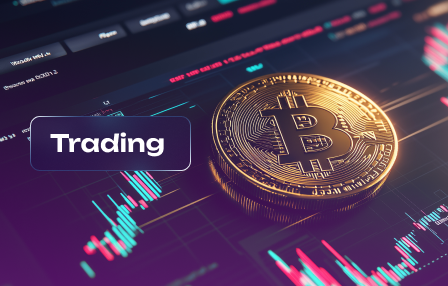How Governments Are Cracking Down on Illegal OTC Exchanges
March 15, 2025
The recent surge in regulatory actions reflects a determined effort to address non-compliant trading platforms. Authorities are stepping up their investigations, highlighting the need for stricter adherence to established rules and guidelines. Immediate compliance with these regulations is no longer optional; it’s a prerequisite for operations.
Fines, shutdowns, and increased surveillance are becoming commonplace as regulators tighten their grip on illicit activities. Businesses engaged in unauthorized transactions must conduct thorough audits of their practices and ensure alignment with legal standards. Ignoring these mandates could lead to severe repercussions that jeopardize not only financial stability but also reputations.
Stakeholders should actively monitor updates from regulatory bodies to stay ahead of impending changes. Implementing robust compliance frameworks is essential for avoiding potential pitfalls. This proactive approach will not only safeguard operations but also enhance trust among users and investors alike.
Identifying Non-Compliant Operations
To detect non-compliant trading activities, focus on transaction patterns that deviate from typical market behavior. Look for unusual volume spikes and large trades executed outside standard business hours.
Examine the platforms for lack of transparency. Reputable venues provide clear information about their regulatory status, operational procedures, and compliance measures. If this data is missing or obscured, approach with caution.
Verify user authentication processes. Platforms that allow anonymous trading often sidestep regulations, posing risks for participants. A robust verification system is a hallmark of legitimate operations.
Monitor communication channels. Reliable entities maintain professional standards in customer support, while dubious operations may utilize unregulated messaging apps or social media for transactions.
Assess the geographical location of the platform. Many compliant entities operate under strict jurisdictions, whereas non-compliant ones may base themselves in regions with lax regulations to evade enforcement.
Stay informed about recent regulatory updates. Knowledge of local laws helps identify operations that exploit regulatory gaps or engage in non-compliance.
Engage with community feedback. Reviews and experiences shared by other users can reveal red flags associated with questionable platforms.
Employ analytical tools designed to track illicit activity. Advanced software can flag suspicious transactions, assisting in identifying potential infractions within the market.
Regulatory Actions and Policies
Adhere to stringent compliance measures that align with current laws to mitigate risks associated with informal trading networks. Establish clear guidelines for transaction reporting and customer verification to ensure transparency.
Implement robust monitoring systems to detect suspicious activities promptly. Utilize advanced analytics and machine learning techniques to identify patterns indicative of non-compliance or illicit operations.
Collaborate with international regulatory bodies to harmonize standards across borders, facilitating information sharing and joint enforcement actions against unauthorized trading platforms.
Regularly update internal policies in response to evolving regulations. Engage in continuous training programs for staff to enhance their understanding of legal obligations and the importance of adhering to established protocols.
Encourage users to report any suspicious transactions or services that lack appropriate authorization. Establish a whistleblower system that protects individuals who provide valuable information about non-compliant activities.
Seek legal counsel before launching new trading initiatives to ensure they comply with existing regulations. This proactive approach will help prevent future legal complications and foster a culture of accountability within the organization.
Impacts on Traders and Investors
Adaptation is key. Traders must pivot their strategies to align with heightened enforcement and shifting regulations. Expect reduced access to certain platforms, which may lead to liquidity challenges for assets typically traded in informal markets.
Transparency becomes paramount. With increased scrutiny, ensuring compliance with regulations will be crucial. Investors should prioritize platforms demonstrating adherence to legal standards, as this can significantly mitigate risks associated with unforeseen penalties or asset freezes.
Market dynamics will shift. As authorities tighten their grip, legitimate venues may experience a surge in volume. This creates opportunities for traders who can identify compliant marketplaces, but caution is warranted; inflated prices can emerge from sudden demand spikes.
Risk assessment should evolve. Engage in thorough due diligence. Unregulated environments expose investors to fraud and volatility. Understanding the regulatory backdrop allows for better risk management and informed decision-making when selecting trading venues.
Community engagement is vital. Staying connected within trading networks can provide insights into regulatory changes and best practices. Collaboration fosters awareness of emerging threats or opportunities arising from enforcement actions.
Investment diversification is advisable. To weather potential market instability caused by stricter oversight, diversify your portfolio across regulated instruments. This strategy helps cushion against abrupt shifts that may arise from crackdowns on unregistered operations.
Future of OTC Markets
To thrive in the evolving landscape of over-the-counter transactions, compliance with emerging regulations is non-negotiable. Here are actionable insights for participants:
- Adapt to Regulatory Changes: Stay informed about updates in compliance requirements. Regularly review new enforcement measures to align operations accordingly.
- Implement Robust KYC Practices: Strengthen Know Your Customer protocols to ensure thorough identification and verification processes, which enhances trust and reduces risks.
- Enhance Reporting Mechanisms: Develop systems that facilitate transparent reporting of transactions to regulatory bodies, aiding in maintaining operational legitimacy.
As scrutiny intensifies, the demand for reliable platforms will increase. Focus on building partnerships with compliant entities, ensuring a solid foundation for future growth.
- Invest in Technology: Leverage advanced technologies to streamline operations and bolster security. Tools like blockchain analytics can aid in monitoring transactions effectively.
- Educate Stakeholders: Foster a culture of compliance by educating all parties involved about the importance of adhering to regulations and best practices.
- Engage with Regulators: Establish open communication channels with authorities. Being proactive can lead to favorable outcomes and smoother compliance processes.
The path forward is clear: prioritize transparency, adopt innovative solutions, and maintain strict adherence to regulations. This approach not only mitigates risks but also positions participants favorably in the market’s future dynamics.



